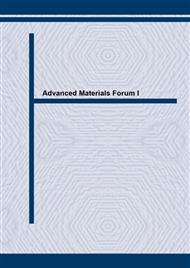[1]
- J. v. Turnhout, “Thermally Stimulated Discharge of Electrets”, in G.M. Sessler, Electrets, (Springer, New York, 1980), pp.81-215.
DOI: 10.1007/978-3-540-34846-7_3
Google Scholar
[2]
- J. Vanderschueren and J. Gasiot, “Field-induced thermally stimulated currents”, in P. Braunlich, Thermally Stimulated Relaxation in Solids, (Springer Verlag, Berlin, 1979), pp.135-223.
DOI: 10.1007/3540095950_10
Google Scholar
[3]
- D. Chatain, P. Gautier and C. Lacabanne, J. Polym. Sci.: Polym. Phys., 11 , p.1631, 1973.
Google Scholar
[4]
- G. Teyssèdre and C. Lacabanne, J. Phys. D: Appl. Phys., 28 , pp.1478-1487, 1995.
Google Scholar
[5]
- G. Teyssèdre, P. Demont and C. Lacabanne, J. Appl. Phys., 79 (12), pp.9258-9267, 1996.
Google Scholar
[6]
- C. J. Dias and J. N. Marat-Mendes, Proc. of 10th Intern. Symposium on Electrets ISE10 p.371, ed by Amalia Konsta, Delphi-Greece 1999.
Google Scholar
[7]
- H. W. Starkweather, Polymer, 32 (13), pp.2443-2448, 1991. 0.4 0.6 0.8 1 1.2 1.4 1.6 1.8 40 60 80 100 120 140 160 180 200 0 0.001 0.002 0.003 0.004 H H/kT m * kT m1 H/kT m * kT m5 H/kTm S = 0.55784 + 273.5H R= 0.99946 H [eV] S [eV/K] compensation law Figure 2. Relaxation of P(VDF/TrFE) together with an explanation for the reas why the compensation law seems to be valid
Google Scholar


